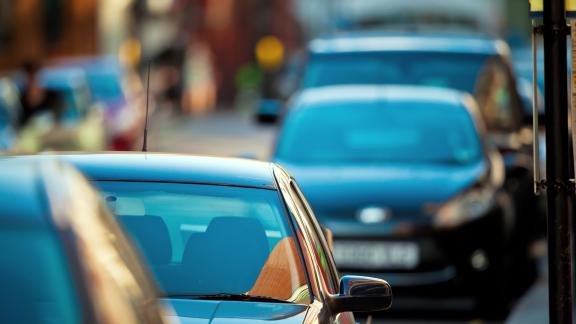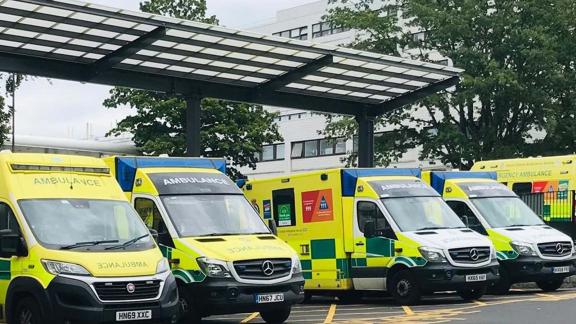Mileage allowances FAQs

These FAQs have been developed to help employers answer queries about mileage allowances for staff covered by Agenda for Change.
Rates of reimbursement for the costs incurred by staff who use their privately owned vehicles on NHS business. These rates are reviewed every May and November, using the latest information on motoring and business costs.
These arrangements do not apply to staff within the remit of the Doctors' and Dentists' Review Body, with the exception of those employed on the 2016 terms and conditions of service for NHS doctors and dentists training in England. For these doctors, their terms and conditions make clear that the rates of reimbursement can be found in section 17 of the NHS Terms and Conditions of Service Handbook.
For very senior managers, they will be paid according to their local policies and contracts of employment.
Rates of reimbursement applying to business journeys made between 1 January 2023- 31 December 2025
| Type of vehicle/allowance | Annual mileage up to 3,500 miles (standard rate) | Annual mileage over 3.500 miles (standard rate) | All eligible miles travelled (see paragraph 17.15 and Table 8) |
| Car (all types of fuel) | 59 pence per mile | 24 pence per mile | |
| Motor cycle | 30 pence per mile | ||
| Pedal cycle | 20 pence per mile | ||
| Passenger allowance | 5 pence per mile | ||
| Reserve rate | 30 pence per mile | ||
| Carrying heavy or bulky equipment | 3 pence per mile |
NEW (19/11/2025): Rates of reimbursement applying to business journeys made on or after 1 January 2026
| Type of vehicle/allowance | Annual mileage up to 3,500 miles (standard rate) | Annual mileage over 3.500 miles (standard rate) | All eligible miles travelled (see paragraph 17.15 and Table 8) |
| Car (all types of fuel) | 56 pence per mile | 21 pence per mile | |
| Motor cycle | 28 pence per mile | ||
| Pedal cycle | 20 pence per mile | ||
| Passenger allowance | 5 pence per mile | ||
| Reserve rate | 28 pence per mile | ||
| Carrying heavy or bulky equipment | 3 pence per mile |
The system - questions 1 - 6
1. Who do the arrangements apply to?
All staff covered by the NHS Terms and Conditions of Service Handbook. The arrangements do not apply to staff within the remit of the Doctors' and Dentists' Review Body and very senior managers, with the exception of those employed on the Terms and Conditions of Service for NHS Doctors and Dentists in Training (England) 2016. For these doctors, their terms and conditions make clear that the rates of reimbursement can be found in Section 17 of the NHS Terms and Conditions of Service Handbook.
Other doctors and dentists not on the 2016 contract will be paid at the mileage rates set out in their terms and conditions, and in the latest Medical and Dental Pay and Conditions Circular.
For very senior managers, they will be paid according to their local policies and contracts of employment.
2. How does the system work?
The same reimbursement rates apply to all staff. There is no distinction between staff who travel often on NHS business (regular users) and those who travel less often (standard users). The size of engine does not count. The NHS Staff Council will set the rates in partnership, and will review them twice a year, moving them up or down to ensure they are in line with current fuel rates.
3. Why does the rate of reimbursement drop after 3,500 miles?
This is the point at which employers and staff need to discuss the possibility of lease, pool or hire cars. We also believe that this is the level at which the standing costs for running a vehicle for business purposes have been met. To continue to pay a full rate of reimbursement for all miles travelled would run the risk of putting some staff into profit when using their vehicle for work.
4. What if an employee starts doing more business miles at work?- Updated 19/11/2025
These rates of reimbursement will be paid for each business mile travelled. That is at 59 pence per mile before 3,500 miles in a year and at 24 pence per mile thereafter. Subject to this threshold each additional business mile travelled is reimbursed at the appropriate rate, subject to the qualifying rules. From 1 January 2026, the rates of reimbursement will be 56 pence per mile before 3,500 miles in a year and 21 pence per mile thereafter.
5. What if an employee changes his/her car?
This will not affect the reimbursement staff receive for the costs of the business miles they travel for work.
6. When does the 3,500 miles per annum run from - April to April or July to July?
The agreement does not specify. The ESR is set up to start counting from July (when the agreement came into effect) to July.
7. Is the change in mileage reimbursement rates from 1 January 2026 due to the ongoing mileage mechanism negotiations? - NEW 19/11/2025
No, the change in reimbursement rate from 1 January 2026 is not due to the ongoing mileage mechanism negotiations and has no interaction or bearing with these negotiations.
Negotiations are still ongoing for a new mechanism and further details on the outcome of this will be available in due course.
Reviews - questions 8- 9
8. How often are business motoring costs reviewed?
The NHS Staff Council reviews the costs of fuel twice a year in April/May and November/December, If these reviews show that reimbursement rates need to change, in line with the Staff Council agreement, new rates will apply from 1 January and 1 July respectively.
9. Will any changes in motoring costs trigger a change in the rates of reimbursement?
If the review produces a change in the rates of reimbursement of less than five per cent, up or down, rates will not change. If the change in rates produced by the change in motoring costs is more than five per cent, rates will change on 1 July or 1 January.
Mileage reimbursed - questions 9 - 11
10. What mileage is included in claims for reimbursement?
The system uses the principle of eligible miles and requires that normal, daily home to base return mileage is deducted from claims for reimbursement i.e. the system provides for only additional out of pocket expenses to be claimed. It is not necessary to use triangles to calculate reimbursable mileage.
11. What happens if the employee normally starts his/her NHS business journeys from home?
The agreement requires the employer and employee to agree the normal work base and the normal home to base return mileage. When the line manager and employee agree that the employee is based at home for the purposes of mileage claims the employee is reimbursed for all business miles travelled from his/her home to the places visited and back to home.
12. What is the reserve rate?
The reserve rate is for use:
- if an employee unreasonably declines the employers offer of a lease car
- when employees are required to return to work or when they work overtime on any day
- when an employee is moved to a new base and they incur additional travel to work expenses
- and in a limited number of other circumstances as detailed in the agreement (paragraph 17.17).
Other road users – question 13
13. What about costs for motorcycle users?
The system contains rates of reimbursement for motorcycle users which will be linked to rates for car users.
Leased cars - questions 14- 15
14. What about rates of reimbursement for lease car users?
Arrangements for the provision of lease cars to NHS staff are the responsibility of local partnerships, and informed by HMRC recommended rates.
15. Do NHS organisations have to use this system?
Where there are already locally agreed alternative arrangements in place, for example approved mileage allowance payments (AMAP) rates, then it will be for the local parties to decide if they wish to maintain the local agreement or implement the national system (paragraph 17.4).
Employers are free to seek to negotiate a local alternative for mileage reimbursement, but this would be dependent upon agreeing this in partnership.
Green issues - question 16
16. What makes the system compatible with the responsibilities on the NHS to reduce its carbon footprint?
The system discourages excessive travel when this is not in the best interests of patients. Rates of reimbursement are not linked to engine size. The system supports motorcycle users and travel by pedal cycle whenever this is consistent with efficient use of time and resources.
NHS Terms and Conditions of Service (TCS) Resource Hub
Please note, the content on this web page can now be found on the NHS TCS Resource Hub, which has resources and guidance to assist employers in understanding and applying the NHS TCS Handbook and NHS Job Evaluation Handbook.



